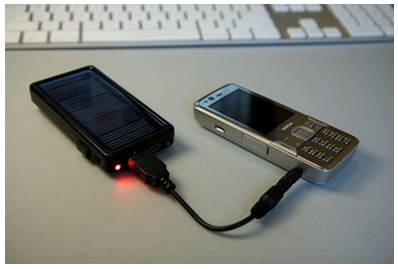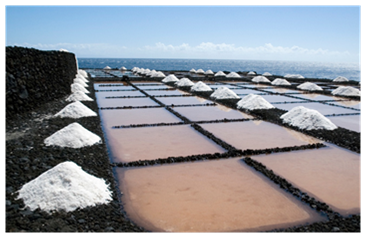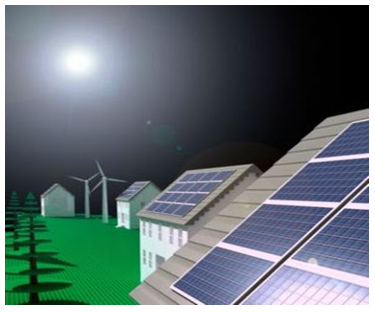Labels
The Sun AND Solar Energy
The sun is a medium star. It is one of the millions of stars that you see at night in the sky. It looks much bigger because it is closer to the Earth than other stars.
The sun is much larger than the Earth, in fact much larger than all the other components of the solar system put together. The sun is the main source of energy that the planets receive. It is composed of approximately 75% hydrogen, 23% helium, and 2% for all other elements. The Earth is relatively cold but the sun is so hot that nearly all molecules are broken into their separate atoms and all are mixed together into a single hot gas.
The sun is much larger than the Earth, in fact much larger than all the other components of the solar system put together. The sun is the main source of energy that the planets receive. It is composed of approximately 75% hydrogen, 23% helium, and 2% for all other elements. The Earth is relatively cold but the sun is so hot that nearly all molecules are broken into their separate atoms and all are mixed together into a single hot gas.
Dimension of the Sun in Relation to Other Space Bodies
State the dimension of the sun in relation to other space bodies
The diameter of the sun is 1.392 million kilometres. Its mass is approximately 330,000 times greeter than that of the Earth. The sun shines brightly because of its very high temperatures. The average surface temperature is 6,000 degrees Centigrade. It is much hotter in the interior where it is about 14 million degrees Centigrade.
Characteristics of the Sun
Describe the characteristics of the sun
The Sun contains 99.85% of all the matter in the Solar System. The planets, which condensed out of the same disk of material that formed the Sun, contain only 0.135% of the mass of the solar system. Jupiter contains more than twice the matter of all the other planets combined. Satellites of the planets, comets, asteroids, meteoroids, and the interplanetary medium constitute the remaining 0.015%.
Solar Energy
The Term Solar Energy
Define the term solar energy
The sun is the source of all energy on Earth. This sun’s energy is what we call solar energy. Solar energy can be defined as the radiant (light and heat) energy produced by the sun.
Different Uses of Solar Energy
Suggest different uses of solar energy
Solar energy has been used for thousands of years in many different ways by people all over the world. The following are some of different uses of solar energy in everyday life:
(i) Generation of electricity: It is used to generate electricity by use of solar panels. Solar energy is captured by solar panels and stored in batteries. The electricity generated by this means can be used in powering various machines and devices where other power supplies are absent, such as in remote places.

Fig 1.5 Charging a cell phone using a rechargeable battery
A solar panel charges a rechargeable battery that in turn charges your cell phone. This means you can charge your phone even when there is no sunlight, at night for example, so long as you've charged your battery during the day.
(ii) Heating, cooking and drying: It is used directly in heating, cooking, and drying clothes, meat, fish, fruits and grains, among other traditional uses. A solar cooker which traps heat from the sun can be used for cooking food.
(iii) Photosynthesis: It is used by growing plants for making their own food through the processes of photosynthesis.
(iv) Formation of coal and oil: Coal is solar energy stored in the bodies of plants that grew thousands of years ago, and which after being buried under the Earth for a very long period, turned into coal. Similarly, oil was formed from dead bodies of organisms.
(v) Formation of rainfall: Evaporation of water which is necessary for cloud and finally rainfall formation also uses solar energy.
(vi) Production of vitamin D in the skin: The most well-known source of vitamin D is via synthesis in the skin induced by sun exposure.
(vii) Production of salt from sea water: The process of harvesting salt from sea water involves evaporation of sea water in evaporation ponds or tanks. As water evaporates, it leaves the salt in tanks or ponds, from which it is collected and processed further before use.

Fig 1.6 Harvesting salt from the sea by evaporation
How the Use of Solar Energy Promotes Environmental Conservation
Explain how the use of solar energy promotes environmental conservation
Solar energy is one of the clean sources of energy in the world due to the fact that it does not produce pollution to the environment during its use. It is a clean source of energy and environmental friendly. The following outline explains how solar energy promotes environmental conservation to our communities:
- Solar energy does not release carbon dioxide gases into the atmosphere (our aerial environment).
- The use of solar energy reduces the demand for charcoal and firewood as a source of energy in our households, an act which reduces the cutting down of trees, which could otherwise lead to environmental degradation.
- The use of solar energy encourages the preservation, conservation and sustainable utilization of forest resources.
- Reduced use of firewood means retaining more trees that could be cut down for firewood. Trees, in turn, absorb excess carbon dioxide from the air, thus helping to purify the air and balance the gases in the atmosphere. Similarly, solar energy from sunlight is used by plants during photosynthesis to produce glucose and release oxygen into the atmosphere.
- Solar energy reduces dependency on kerosene and spirit which burn to produces smoke that pollutes the environment.
- Unlike oil (used in generators to produce electricity), coal, charcoal, and firewood, solar energy is renewable source of energy. It is obtained daily during sunshine and it is permanent and reliable.

Fig 1.7 Solar panels on roof tops absorbing the sun’s heat energy
How Solar Energy May Contribute to Emancipation of Women
Explain how solar energy may contribute to emancipation of women
In African societies, the task of fetching firewood, cooking, washing, and taking care of children falls mainly under women and girls. The use of solar energy for cooking, heating and performing other household duties, means allowing more free time for women and girls as they are relieved from the burden of fetching and carrying firewood. As a result, women will have ample time to participate in other income-generating activities such as trade and farming. On the other hand, girls will attend to schools and perform as better as boys do.
Better still, the use of solar energy in place of firewood will improve the women’s health because they will not be exposed to soot, ashes and smoke generated by firewood when burnt. Solar energy is clean energy. It does not pollute the environment or affect women while cooking. Therefore, the use of solar energy in performing different household duties will make life of the women easy.

Fig 1.8 Village women carrying firewood on their heads
Subscribe to:
Post Comments
(
Atom
)




No comments :
Post a Comment